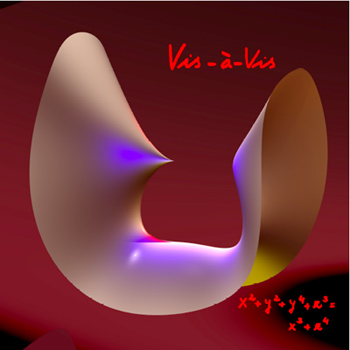
The shape of things to come
This article is part of a series celebrating the 20th birthday of the Isaac Newton Institute in Cambridge. The Institute is a place where leading mathematicians from around the world can come together for weeks or months at a time to indulge in what they like doing best: thinking about maths and exchanging ideas without the distractions and duties that come with their normal working lives. And as you'll see in our articles, what starts out as abstract mathematics scribbled on the back of a napkin can have a major impact in the real world.
Progress in pure mathematics has its own tempo. Major questions may remain open for decades, even centuries, and once an answer has been found, it can take a collaborative effort of many mathematicians in the field to check that it is correct.
The Isaac Newton Institute provides mathematicians with the opportunity to come together for prolonged periods of time, away from their day-to-day work, to consider the hardest problems in their field. The New Contexts for Stable Homotopy Theory programme (NST), held at the Institute in 2002, is a prime example of how this approach can benefit researchers and lead to landmark results.
Taming geometry with algebra

Image: Herwig Hauser.
Algebraic topology started in the late 19th century with the work of Henri Poincaré. It provided a way to understand the complex mathematical objects arising from the study of differential equations in physics by converting the difficult problems in geometry and topology into more amenable algebra. Since Poincaré’s time, algebraic topology has grown into a major mathematical field in its own right.
Stable homotopy theory is an important context for performing the type of conversion from geometrical to algebraic data that Poincaré began. The mathematical theories themselves are represented by geometric objects, and, at the time of the programme, satisfactory models had only recently been found, opening a wide range of new possibilities for exploiting algebraic ideas in topology, geometry, number theory and physics.
"Stable homotopy theory is a collection of techniques that came out of algebraic topology and have been useful in many areas of mathematics: algebra, topology, geometry, number theory and physics," says John Greenlees, one of the organisers of the programme. "When we held the programme there had been a number of developments in the core subject — stable homotopy theory — as well as in algebraic topology more generally. The programme was an opportunity to take advantage of these technical advances that made all sorts of mathematical applications possible. Striking examples where participants of the programme played a central role come from the recent understanding of topological modular forms and of surface bundles."
The Bloch-Kato Conjecture
One of the most significant impacts to come out of the programme was the final resolution of the Bloch-Kato Conjecture, whose proof had been announced in 1998. The result has important implications in algebraic geometry and number theory. In particular, it is relevant to the Riemann zeta function, which lies at the heart of the Riemann Hypothesis, one of the biggest open problems in mathematics.
"This conjecture connected many branches of mathematics — algebraic K-theory, number theory, the Riemann zeta function, Étale Cohomology and algebraic geometry,” says programme participant Charles Weibel, from Rutgers University. The conjecture allowed one of the exotic cohomology theories discovered in the 1960s, the Étale Cohomology, to be described in more elementary terms. "The conjecture says that the Étale Cohomology of a field has an explicit structure as a ring, and that means every element can be written as a polynomial of certain generators, and we can identify when two elements are the same," says Weibel.
During the programme Weibel and colleagues were exploring the implications of the result, when they made an important discovery: it appeared that there was hole in the proof. "While I was at the Newton Institute I realised there was a problem, which turned out to be a mistake. This led directly to the solution of the conjecture four or five years later." Weibel published the resolution of the Bloch-Kato conjecture in 2009. The paper has been widely cited and has had a significant impact on the field.
An environment designed for research
One of the most important aspects of the programme was that it brought together researchers from a wide range of fields. With 80 participants from around the world, the programme not only led to an important proof, but also succeeded in bringing the latest technical advances to as large an audience as possible. "We were able to bring results from different areas together and to share them, to pass the state of knowledge onto a wider group," says Greenlees. It was particularly significant that not only did the programme bring together a wide range of researchers, it also brought together these different strands of research at a seminal stage in their development.
As well as formal collaborations, participants particularly benefitted from the informal interactions that such a residential programme allows. "The best part of the programme was the physical access of having these people very close by and working shoulder to shoulder," says Weibel. "I really liked the environment where I could be working in my little cubicle and I'd have a question, and I'd just take a few steps and there's the guy I needed to ask to find the information." The opportunity for informal professional and social interaction is one of the unique and significant benefits of Newton Institute programmes.